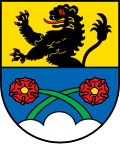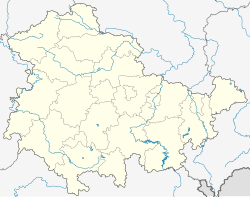Schalkau
Today, Schalkau is a topic of great interest and relevance in society. Whether due to its impact on people's daily lives, its relevance in academia or its influence on technological development, Schalkau has managed to capture the attention of experts and fans alike. As we delve into this article, we will explore the different facets of Schalkau, its implications in today's society, and its potential for the future. From its origins to its contemporary evolution, Schalkau has proven to be a topic worthy of analysis and reflection, and this article aims to examine it carefully to understand its importance and relevance today.
This article needs additional citations for verification. (December 2009) |
Schalkau | |
|---|---|
Location of Schalkau
within Sonneberg district  | |
| Coordinates: 50°23′40″N 11°0′31″E / 50.39444°N 11.00861°E | |
| Country | Germany |
| State | Thuringia |
| District | Sonneberg |
| Government | |
| • Mayor (2024–30) | Mark Schwimmer[1] (Ind.) |
| Area | |
• Total | 44.03 km2 (17.00 sq mi) |
| Elevation | 400 m (1,300 ft) |
| Population (2022-12-31)[2] | |
• Total | 3,266 |
| • Density | 74/km2 (190/sq mi) |
| Time zone | UTC+01:00 (CET) |
| • Summer (DST) | UTC+02:00 (CEST) |
| Postal codes | 96528 |
| Dialling codes | 036766 |
| Vehicle registration | SON, NH |
| Website | www.schalkau.de |
Schalkau is a town in the district of Sonneberg, in Thuringia, Germany. It is situated 13 km west of Sonneberg, and 15 km north of Coburg. The former municipality Bachfeld was merged into Schalkau in December 2019.
History
From 1680 to 1920, Schalkau was part of Saxe-Meiningen, from 1920 to 1952 of the State of Thuringia, from 1952 to 1990 of the Bezirk Suhl of East Germany and since 1990 again of Thuringia.
Transportation
Schalkau has two train stations, Schalkau and Schalkau Mitte, on the Hinterland Railway (Hinterlandbahn) from Sonneberg Hauptbahnhof to Eisfeld.[3] There is also a regular bus service to Sonneberg.
Education
There is one secondary school, educating pupils 11-16 (ordinarily) which falls into the 'Realschule' category. The school is named after the famous German writer, Goethe. There is a post office and a few other facilities.



Town division
The town has 10 districts:
|
|
Inhabitants
Number of inhabitants (as of 31 December):
|
|
|
- Source since 1994: Thuringia statistical office Erfurt
Personalities
- Jan Eichhorn (born 1981), luger
- Maximilian Mörlin (1516-1584), Protestant theologian and reformer
- David Möller (born 1982), luger
- Fritz Mueller (1907-2001), aerospace engineer
References
- ^ Gewählte Bürgermeister - aktuelle Landesübersicht, Freistaat Thüringen. Retrieved 25 June 2024.
- ^ "Bevölkerung der Gemeinden, erfüllenden Gemeinden und Verwaltungsgemeinschaften in Thüringen Gebietsstand: 31.12.2022" (in German). Thüringer Landesamt für Statistik. June 2023.
- ^ Eisenbahnatlas Deutschland (German railway atlas) 2007/2008 edition. Schweers + Wall. 2007. ISBN 978-3-89494-136-9.


